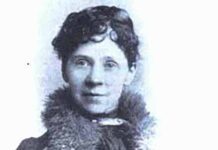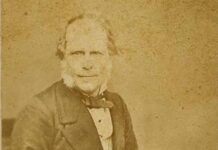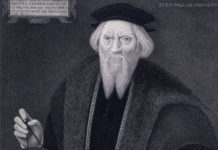Cornelius Vanderbilt dropped out of school at the age of 11 to work on the docks in New York. By age 16 he was running his own business ferrying between Manhattan and Staten Island. His business kept growing, and he broke Robert Fulton’s monopoly on New York steam shipping in a court case over shipping to New Jersey. From that point he proceeded to build quite an empire. He once said, “If I had learned education, I would not have had time to learn anything else.”
By the 1840’s he had a very large number of ships carrying freight and passengers throughout the northeast, and could perhaps claim to be the largest single employer in America. He saw the huge migration to California during the 1849 gold-rush as a tremendous opportunity, and formed the Accessory Transit Company to carry freight and passengers to the goldfields via Nicaragua. Ships from the east coast of the U.S. landed on the gulf coast of Nicaragua, transferred their passengers to a railroad running to the shore of Lake Nicaragua. From there a combination of steam packets and stagecoaches carried them over lake, river, and land to the Pacific Coast. There they again boarded steamships for the last leg of their journey to California.
Vanderbilt traveled to England to negotiate with the British for a possible canal to Lake Nicaragua, but disloyal managers and the filibuster, William Walker, caused him to change his plans. Through his military exploits William Walker made himself briefly President of Nicaragua, and revoked Vanderbilt’s contract granting it to former Accessory Transit Co. managers. Vanderbilt was so angered by this that he ordered his ships out, and changed to the longer route across Panama. This cut Walker and his small band off from much needed reinforcements and supply. Dooming both Walker’s “Presidency” and the former managers’ business aspirations since they did not yet have any ships of their own.
Vanderbilt won in the end, as he usually did, and made vast profits off of both the 49ers and the merchants supplying the 49ers. In the early 1860’s Vanderbilt, at an age where most men would be thinking of retirement (he was born in 1794), decided to go into railroads. He soon owned and operated about 16 different railroads with a tendency toward consolidation of New York traffic, and lines west to Chicago. With several partners he built the first Grand Central Station, and his statue still stands there today. In later life he took to styling himself “the Commodore” due to his Dutch origins, and having briefly commanded a fleet of merchant schooners supplying the army in 1812. Although known for cut-throat business practices and holding tightly to every penny, to fulfill a promise to his wife, he gave one million dollars to the Nashville, Tennessee, university that bears his name. It was a rare and small gesture, he was worth in the vicinity of 100 million dollars at his death in 1877.
Here, clearly, is a man who understood and took the fullest advantage of the revolutionary transportation possibilities made possible by the steam engine.








